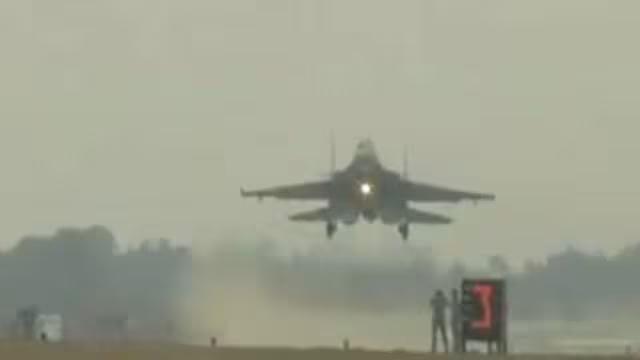
Why is IAF Conducting Fighter Jets’ Landing & Take-off Drill at Ganga Expressway in UP?
The Indian Air Force (IAF) has recently conducted a unique exercise, where fighter jets took off and landed on the Ganga Expressway in Uttar Pradesh. This exercise, which included the Rafale fighter jets, was conducted to assess the expressway’s potential as an alternative runway during times of war or national emergencies. This is the first airstrip on any expressway in India equipped to handle both day and night landings of jets. In this blog post, we will delve into the reasons behind this exercise and its implications for the country’s defense capabilities.
The exercise, which was conducted in a span of two days, involved a series of take-off and landing drills by the IAF’s fighter jets, including the Rafale, on the Ganga Expressway. The expressway, which stretches over 165 kilometers, was converted into an impromptu airstrip for the exercise. The IAF’s pilots, along with the ground crew, worked in tandem to ensure a seamless and efficient operation.
So, why is the IAF conducting this exercise on the Ganga Expressway? The answer lies in the country’s growing need for alternative runways and emergency landing strips. In times of war or national emergencies, conventional airfields may be unavailable or damaged, leaving the country without a reliable means of air support. This is where the Ganga Expressway comes in – an expressway that can be converted into a makeshift airstrip, providing a safe and secure means of taking off and landing.
The Ganga Expressway, which is currently under construction, is an ambitious project aimed at connecting the state capital Lucknow to the national capital Delhi. The expressway is designed to reduce travel time between the two cities and alleviate traffic congestion. However, in the context of this exercise, the expressway’s potential as an alternative runway is being explored.
The IAF’s decision to conduct this exercise on the Ganga Expressway is also seen as a strategic move to enhance the country’s defense capabilities. With the threat of aerial attacks always looming, having alternative runways and emergency landing strips can be a game-changer in times of crisis. The exercise has also demonstrated the IAF’s ability to adapt to changing circumstances and respond to emerging threats.
Another significant aspect of this exercise is its ability to test the expressway’s infrastructure and its suitability for aircraft operations. The Ganga Expressway has been designed to accommodate high-speed traffic, but can it also handle the weight and speed of fighter jets? The exercise has provided valuable insights into the expressway’s capabilities and limitations, which will be crucial in determining its future use.
The IAF’s exercise on the Ganga Expressway has also raised questions about the potential for similar exercises on other expressways and highways. Can other expressways in the country be converted into makeshift airstrips? What kind of infrastructure and support would be required to make this happen? These questions are not only relevant to the IAF but also to the country’s overall defense strategy.
In conclusion, the IAF’s exercise on the Ganga Expressway is a significant development in the country’s defense capabilities. It highlights the importance of having alternative runways and emergency landing strips, and demonstrates the IAF’s ability to adapt to changing circumstances. While the exercise has raised more questions than answers, it has also provided valuable insights into the potential of India’s expressways to serve as makeshift airstrips in times of crisis.






